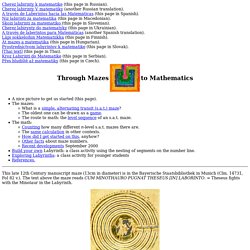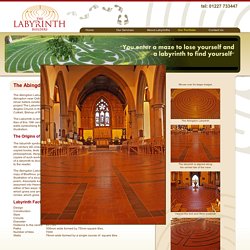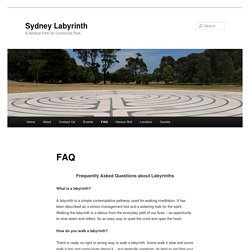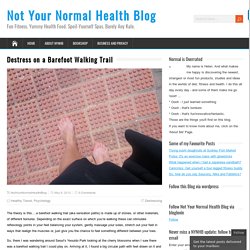

Labyrinths. Mazes and Mathematics. Cherez labirinty k matematike (this page in Russian).Cherez labirinty V matematiky (another Russian translation).A través de Laberintos hacia las Matemáticas (this page in Spanish).

Paxworks labyrinths, canvas labyrinths spiritual prayer gifts gospel peace. LabyrinthBlog by Erwin Reißmann (D) and Andreas Frei (CH) Schneckenhauslabyrinth mymaze 02 2011. How to Draw Ariadne’s Thread for a Snail Shell Labyrinth. The seed pattern to draw Ariadne’s thread, discovered by Gundula Thormaehlen-Friedman, invites to play with it.

To try simply to draw more or less curves, to fix the middle somewhere else and so on. And then to look whether a “right” labyrinth is made or not. The matter with the “right” labyrinth is not so easy at all. No dead ends may occur, this is clear. The way should change the direction, he should approach to the middle. And thus I have simply tried what happens if I shift the goal one “unity” to the right. The seed pattern in square form I immediately choose the square form, so that I can draw it geometrically correct. The completed arcs All curve ends of the same name are connected strictly and outside around the middle “Z”. Labyrinthinabag. The Abingdon Labyrinth - The Labyrinth Builders. The Abingdon Labyrinth dates from the 11th century as an illustration in a book produced in Abingdon near Oxford, England.

Although well known by labyrinth enthusiasts this design has never before existed in physical form in the town of its origin. As part of a major refurbishment project The Labyrinth Builders have now recreated this ancient design within St Michaels and All Angels Church in the town of Abingdon. The labyrinth was dedicated by the Rt. Revd. Stephen Cottrell, Bishop of Reading on 25th January 2009. The Labyrinth is rendered in black and red ceramic tiles to compliment the existing original floor tiles of this 19th century church. Ontario Labyrinth Directory — Labyrinth Community Network. Labyrinth resources. World-Wide Labyrinth Locator - Welcome. FAQ - Sydney Labyrinth. Frequently Asked Questions about Labyrinths What is a labyrinth?

A labyrinth is a simple contemplative pathway used for walking meditation. It has been described as a stress management tool and a watering hole for the spirit. Walking the labyrinth is a detour from the everyday path of our lives – an opportunity to slow down and reflect. Its an easy way to quiet the mind and open the heart. How do you walk a labyrinth? There is really no right or wrong way to walk a labyrinth.
To deepen your experience you could: Focus on your favourite prayer or mantra, or…Bring your awareness to your feet, contacting the ground fully with each step, ‘planting peace with each footfall’ as Thich Nhat Hanh says. Releasing on the way in – letting go of distractions and that which no longer serves you. Receiving a sense of peace and calm as you pause in the centre. Merri Creek Labyrinth (Melbourne, Australia): Top Tips Before You Go - TripAdvisor. Walking the Labyrinth. All truly great thoughts are conceived by walking ~ Friedrich Nietzsche Meandering leads to perfection ~ Lao Tzu Apart from being a movie with David Bowie in it, labyrinths exist out in the world as large spaces which are created on the ground by drawing or by using stones, etc.

They are often circular. Over recent decades they have enjoyed greater popularity around the western world, and Melbourne is no exception. The Desert Rose labyrinth at Ivins, Utah, USA. Find Labyrinth in Australia. A healing hospital labyrinth - GardenDrum. Some garden projects just leave me in awe.

One such project is the Jessie Mary Vasey Labyrinth located at Austin Health’s Heidelberg Repatriation Hospital in Melbourne, the first hospital labyrinth in Victoria. This is a special place that offers respite, refuge and reflection. Jessie Mary Vasey Labyrinth designed by Simon Normand Some may question the appropriateness of spending money on projects like this within healthcare settings. However I strongly believe that we need to approach the provision of healthcare in a holistic manner and care for the physical, emotional and psychological needs of our patients, their families and also the staff. Using Labyrinths for Prayer, Rest and Health. Destress on a Barefoot Walking Trail - Not Your Normal Health Blog. The theory is this….a barefoot walking trail (aka sensation paths) is made up of stones, or other materials, of different textures.

Depending on the exact surface on which you’re walking these can stimulate reflexology points in your feet balancing your system, gently massage your soles, stretch out your feet in ways that realign the muscles or, just give you the chance to feel something different between your toes. So, there I was wandering around Seoul’s Yeouido Park looking at the cherry blossoms when I saw there was a barefoot walking trail I could play on. Arriving at it, I found a big circular path with feet drawn on it and a sign showing me all the reflexology points I was going to stimulate as I wandered round it. I was very excited as I’d never tried a barefoot walking trail and this looked very therapeutic. I got ready to join the group of old ladies already strolling – I popped off my shoes and stepped on…..walked about four steps in a confident style, then started to swear.